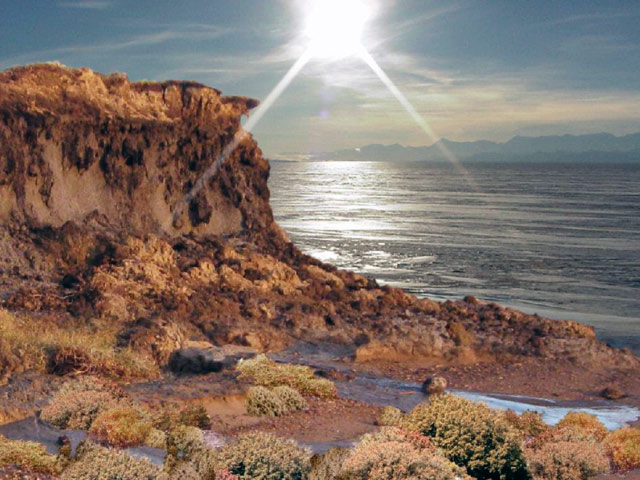A team of US researchers, including NASA scientists, has found that ancient Antarctica was much warmer and wetter than previously suspected.

This artist's rendition created from a photograph of Antarctica shows what Antarctica possibly looked like during the middle Miocene epoch, based on pollen fossil data (NASA / JPL-Caltech / Philip Bart / LSU)
By examining plant leaf wax remnants in sediment core samples taken from beneath the Ross Ice Shelf, the research team found summer temperatures along the Antarctic coast 15 to 20 million years ago were 20 degrees Fahrenheit (11 degrees Celsius) warmer than today, with temperatures reaching as high as 45 degrees Fahrenheit (7 degrees Celsius). Precipitation levels also were found to be several times higher than today. The findings were published in Nature Geoscience.
“The ultimate goal of the study was to better understand what the future of climate change may look like,” said lead author Dr Sarah Feakins of the University of Southern California in Los Angeles. “Just as history has a lot to teach us about the future, so does past climate. This record shows us how much warmer and wetter it can get around the Antarctic ice sheet as the climate system heats up. This is some of the first evidence of just how much warmer it was.”
According to NASA, scientists began to suspect that high-latitude temperatures during the middle Miocene epoch were warmer than previously believed when co-author Dr Sophie Warny, an assistant professor at the Louisiana State University in Baton Rouge, discovered large quantities of pollen and algae in sediment cores taken around Antarctica. Fossils of plant life in Antarctica are difficult to come by because the movement of the massive ice sheets covering the landmass grinds and scrapes away the evidence.
“Marine sediment cores are ideal to look for clues of past vegetation, as the fossils deposited are protected from ice sheet advances, but these are technically very difficult to acquire in the Antarctic and require international collaboration,” Dr Warny said.
Tipped off by the tiny pollen samples, Dr Feakins opted to look at the remnants of leaf wax taken from sediment cores for clues. Leaf wax acts as a record of climate change by documenting the hydrogen isotope ratios of the water the plant took up while it was alive.
“Ice cores can only go back about one million years,” Dr Feakins said. “Sediment cores allow us to go into ‘deep time.'”
Based upon a model originally developed to analyze hydrogen isotope ratios in atmospheric water vapor data from NASA’s Aura spacecraft, co-author and JPL scientist Dr Jung-Eun Lee created experiments to find out just how much warmer and wetter climate may have been.
“When the planet heats up, the biggest changes are seen toward the poles,” Dr Lee said. “The southward movement of rain bands associated with a warmer climate in the high-latitude southern hemisphere made the margins of Antarctica less like a polar desert, and more like present-day Iceland.”
The peak of this Antarctic greening occurred during the middle Miocene period, between 16.4 and 15.7 million years ago. This was well after the age of the dinosaurs, which became extinct 64 million years ago. During the Miocene epoch, mostly modern-looking animals roamed Earth, such as three-toed horses, deer, camel and various species of apes.
_______
Bibliographic information: Feakins S.J., Warny S., Lee J-E. 2012. Hydrologic cycling over Antarctica during the middle Miocene warming. Nature Geoscience, published online 17 June 2012; doi:10.1038/ngeo1498







